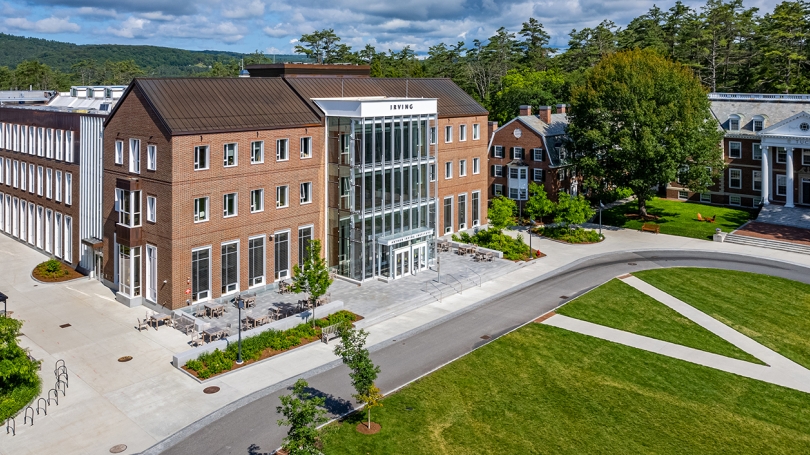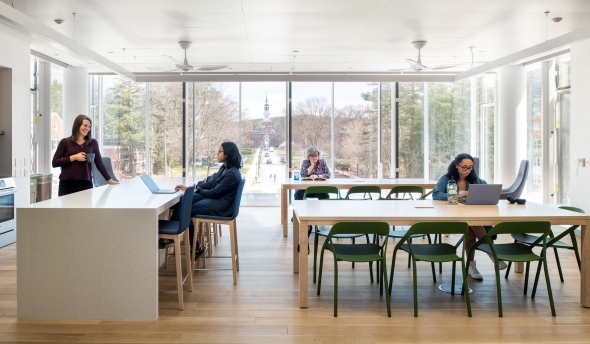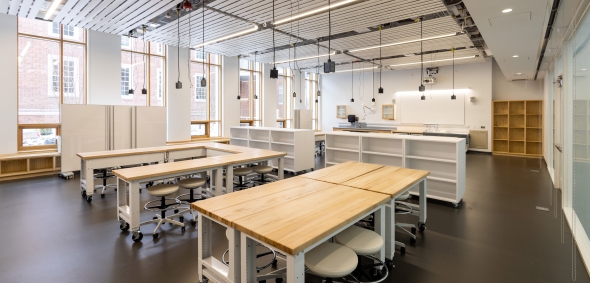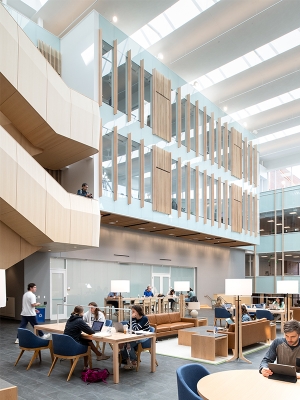

We are proud to share that The Arthur L. Irving Institute for Energy and Society has recently been honored with the prestigious American Institute of Architects (AIA) Committee on the Environment (COTE) Top Ten Award. Recognized as the industry's leading program for sustainable design excellence, the AIA COTE awards celebrate projects that demonstrate outstanding environmental performance alongside innovative and compelling architecture.

In addition, last year the Irving Institute received the 2024 Building of the Year award from the New Hampshire Chapter of the U.S. Green Building Council. This annual recognition highlights the highest-scoring LEED-certified building in the state. The Irving Institute has achieved LEED Platinum certification, the highest rating available, underscoring its commitment to sustainability.
The development of the Irving Institute involved close collaboration between Goody Clancy and Dartmouth's campus stakeholders, including facilities staff. The overarching goal was to create a high-performing building that advances sustainability and decarbonization while embodying the Institute's dedication to interdisciplinary research and education.
Connecting Dartmouth's Thayer School of Engineering and Tuck School of Business, with a direct sightline to the Baker-Berry Library, the Irving Institute functions as a campus crossroads. Its prominent location fosters interdisciplinary collaboration and symbolizes the integration of arts, sciences, engineering, and business.
"What makes the Irving Institute so special isn't just its high-performance design, it's how the space enables connection," said Molly Dunn, Building Engagement & Operations Manager. "We see students, faculty, and researchers from across Dartmouth coming together here to exchange ideas, solve complex problems, and collaborate on a shared vision for a more sustainable future."

Designed with both performance and community in mind, the building incorporates numerous sustainable features:

The Irving Institute fosters community through its expansive, welcoming atrium, encouraging interaction and collaboration. Interior spaces prioritize thermal comfort, excellent ventilation, and abundant daylight—over 90% of work areas are naturally lit. Large, high-performance glass windows provide views while filling interior spaces with natural light, creating a bright and inviting environment.
Climate models project that Hanover will experience a 75-130% increase in days requiring cooling by the end of the century. To address this, the building incorporates architecturally integrated cooling and ventilation strategies, including an automated natural ventilation system. These features reduce environmental impact and enhance resilience under future climate conditions.
Faculty Director Geoff Parker commented, "Sustainable solutions to energy and climate challenges require innovation at the intersection of disciplines. It's a privilege to work in a building that not only serves as a metaphor for our ambitions but also physically embodies what we aim to achieve through our academic and research programs."
The Irving Institute exemplifies sustainable design excellence—reducing environmental impacts while creating a resilient, future-ready academic space. It stands as a model of how innovative architecture can support higher education's mission to promote sustainability, foster research, and strengthen community engagement.
Learn more about Goody Clancy and the AIA COTE Top Ten Award.
